How to make a wedding cake
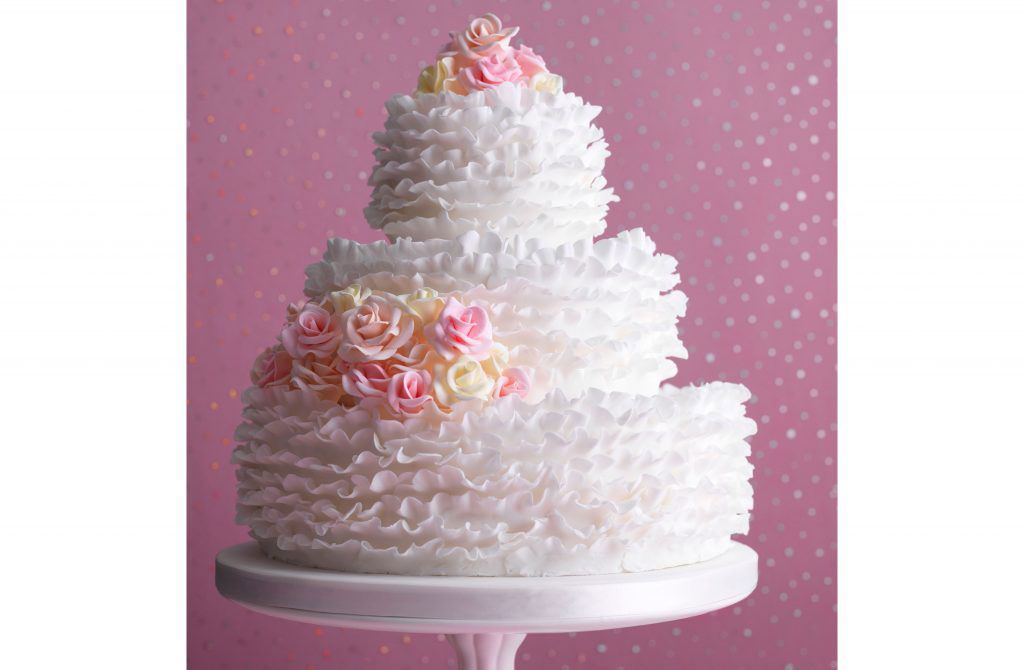

Learn how to make your own wedding cake with this simple tiered wedding cake recipe, which is easier than it looks. This impressive wedding cake recipe can be made in just a few simple steps. From covering the cake to ruffles, this step-by-step recipe turns this seemingly complicated recipe into a simple guide that is perfect for beginners.
Triple tested in the Woman's Weekly kitchen, this wedding cake recipe not only looks the part, it tastes it too. Handmade edible roses and sugarpaste ruffles turn this cake into a masterpiece.
A madeira sponge or fruit cake would work best for this decorating technique as the sponges are much firmer and able to take more weight than a regular chocolate or vanilla sponge.
The quantities for marzipan and icing in this recipe are based on a three-tier cake using 4'', 7'' and 10'' round fruit cakes which will serve about 100-120. We recommend having 3'' between the tier sizes for a three-tier cake, so if you want a larger cake, then 6'', 9'' and 12'' would work well and would serve about 150 people. The cakes can be all fruit or all Madeira or you can vary the layers.
Sizes of cakes and boards are given in inches as most cake-decorating supply shops still work in imperial.
Ingredients
- 4in, 7in and 10in round fruit cake or Madeira cakes
- 10-12tbsp apricot glaze or sieved apricot jam
- 3kg white marzipan
- 3.5kg white sugarpaste
- 2-3 tsp CMC (also called Tylose or Sugarcel)
- Cornflour
- 1 x 200g packet white flower paste, e.g. Squires Kitchen Florist Paste
- Pale pink, pale yellow and soft peach flower paste, e.g. Squires Kitchen Florist Paste (Pastel)
Step 1
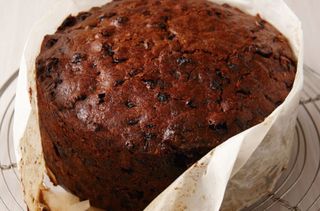
You will first need to make your sponge using a traditional fruit cake or Madeira cake recipe.
GoodtoKnow Newsletter
Parenting advice, hot topics, best buys and family finance tips delivered straight to your inbox.
Upturn the cakes and place them on the right size boards/drums. The 4'' and 7'' cakes go on the same size boards. Place these cakes on the boards onto spare cake drums for icing them. Place the 10" cake on the 13" cake drum. Warm the glaze or jam until it’s runny and spread it over the cake.
Step 2
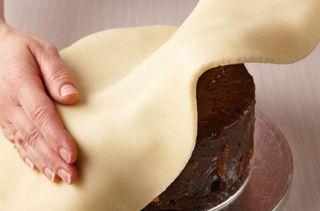
Knead some marzipan to soften it, then roll it out on a surface dusted with icing sugar until it’s large enough to cover the top and sides of the cake
Lift the marzipan over the cake and press it down on the top, and then the sides, easing in any fullness around the sides.
Cut away the excess marzipan around the base of the cake, but keeping the marzipan so it’s covering the thin cake board.
Polish the marzipan smooth using the icing smoother and/or side-scraper.
Knead white sugarpaste until smooth. Roll it out on a surface dusted with icing sugar until it’s large enough to cover the cake.
Step 3
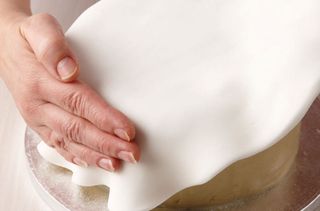
Brush water over the marzipan. Lift the icing over the cake, taking care not to trap any pockets of air under the icing
Ease in any fullness as for the marzipan and cut off excess to use for the two upper tiers. Cover the middle tier. For the bottom tier, dampen the top of the cake drum with water and press the sugarpaste to cover the drum and then cut away around the edge of the cake drum.
If there are any air bubbles in the sugarpaste, pierce them using a scribing tool or pin. Polish the surface of the sugarpaste smooth using a smoother and/or side-scraper as for the marzipan.
For a Madeira cake, halve the cake and spread a thin layer of raspberry jam over one half and buttercream over the other and sandwich them together. Spread a thin layer of buttercream over the top and sides, getting it as smooth as possible. Cover with marzipan and sugarpaste as for a fruit cake (omitting the layer of apricot jam, as the buttercream will act as “glue” to stick the marzipan to the cake). The layer of marzipan may be left out, but I’d recommend using it as it will give the finished cake a smoother surface.
Step 4
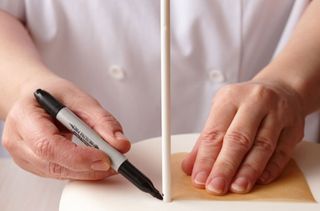
Cut a square of baking parchment as a guide for positioning the dowels, making sure it’s smaller than the tier that is going to sit on top. Press one of the dowels into the cake, making sure it’s straight, and that it goes all the way down to the cake drum. Mark the height of this dowel, so it’s very slightly above the height of the sugarpaste, then remove the dowel from the cake.
Mark another three dowels to the same length and then cut them all.
Press one piece of dowel at each corner of the square of baking parchment, making sure they’re all straight. As the dowels are all the same length, the next tier should be straight, even if the cake is sloping slightly.
Step 5
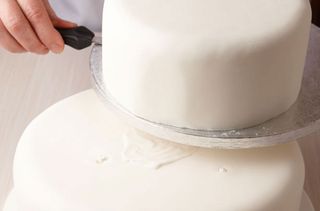
Mix some sugarpaste with water until it’s a “stretchy” consistency.
Spread some of the softened sugarpaste between the four pieces of dowel. Slide the next tier into place, keeping it on the thin cake board, so that the board rests on top of the dowelling to support the cake. Repeat the dowelling process to put the top tier on the cake.
Step 6
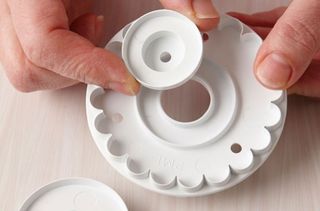
Knead about 1 teaspoon CMC into each 200g piece of white sugarpaste. Keep it well wrapped in a freezer bag while you’re not using it, so it doesn’t dry out. It’s better to work with small quantities, so mix as required.
Fit the middle-size plain round cutter into the centre of thefluted Garrett frill cutter. Roll out some of the sugarpaste with CMC on a surface lightly dusted with icing sugar and use the cutter to cut out a fluted circle, with a plain circle taken out of the centre.
Dust a little icing sugar onto the work surface. Use a cocktail stick to frill the fluted edge by rolling backwards and forwards over the edge, just working on the fluted edge and not stretching the straight edge. Keep turning the sugarpaste between rolls, so that it doesn’t stick to the work surface.
Step 7
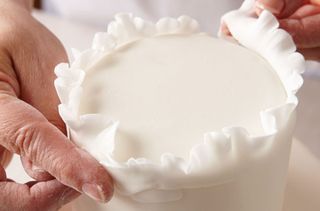
Cut into the frill to give a strip and brush water along the straight edge.
Starting at the top of the cake, place the frill around the top edge, trying to keep most of it level, but letting either end drop slightly. Press the frill into place along the straight edge.
Step 8
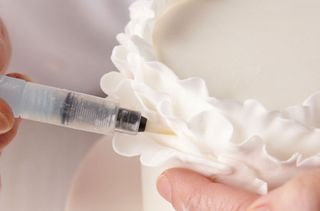
Make a second frill and stick it to the cake, continuing around from the end of the first frill, again sticking each end slightly lower.
Repeat making frills to cover the sides of the cake, spiralling them down the cake. If any frills start to droop too much, brush a little water onto them and stick them in place. Repeat on the other two cake tiers.
Step 9
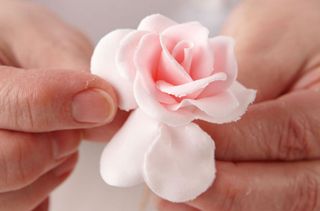
Click here to learn how to make the roses to complete your cake.
Step 10
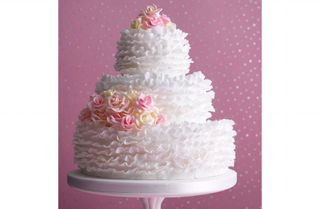
And there you have your finished wedding cake!

Jessica Dady is Food Editor at GoodtoKnow and has over 12 years of experience as a digital editor, specialising in all things food, recipes, and SEO. From the must-buy seasonal food hampers and advent calendars for Christmas to the family-friendly air fryers that’ll make dinner time a breeze, Jessica loves trying and testing various food products to find the best of the best for the busy parents among us. Over the years of working with GoodtoKnow, Jessica has had the privilege of working alongside Future’s Test Kitchen to create exclusive videos - as well as writing, testing, and shooting her own recipes. When she’s not embracing the great outdoors with her family at the weekends, Jessica enjoys baking up a storm in the kitchen with her favourite bakes being chocolate chip cookies, cupcakes, and a tray of gooey chocolate brownies.